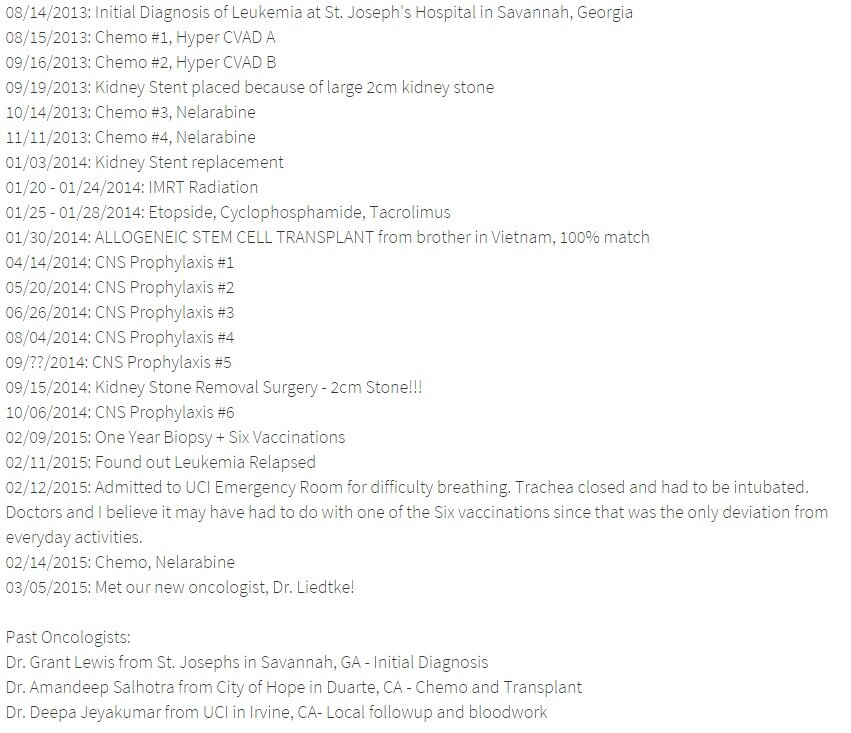Well, a team of doctors.Reflecting on this whole week, we have had meetings with the following departments and doctor:
- Stanford Ear Nose Throat (ENT): the tracheotomy tube to assist with breathing, and to take a biopsy of the throat.
- Stanford Radiology: MRI and PET CT of the throat area
- Stanford Blood and Marrow Transplant (BMT): to discuss graft vs. host disease and effects of transplant on relapse
- Stanford Hematology Oncology: to discuss options for Leukemia growth in throat area and treatment options- radiation, chemo, do nothing
- Stanford Radiation Oncology: to discuss options for radiation of the throat area
- Stanford Palliative Care: to discuss ways to continue some sort of normal lifestyle while undergoing treatment
- City of Hope Oncology: In addition, since Radiation Oncology is a new addition, we needed to set up a new patient appointment even though we have been at Stanford for over a year. Radiation Oncology requested the DVH - Dosage Volume Histogram of past radiation treatments. This did not exist in the records City of Hope sent to Stanford last year. I have used Grand Rounds and Picnic Health to help us gather medical records in the past, and they did not have it either. It appears that Radiation Oncology has its own data system and even though a full medical history has been requested in the past, their records were not included. Calling the Medical Records office at City of Hope took too long, so I contacted our oncologist directly who helped us get records over to Stanford. Thank you City of Hope!
I spent about 2 hours one morning coordinating the appointments around other commitments, optimizing the timing of each one. Palliative Care is scheduled after the meetings with Hematology and BMT. And Radiation Oncology is scheduled last since that is a final resort and we just want that team on standby in case we want to go down that path. Now on to gathering more data, more debugging, and finding a solution!


